| Romantic Transferware Red
|
|
|
[< Prev]
[Next >] |
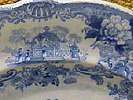 BLUE >> |
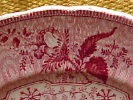 RED >> |
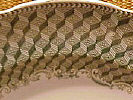 YELLOW GREEN >> |
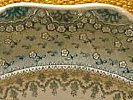 TEAL GREEN >> |
 BROWN >> |
 PURPLE >> |
 BLACK >> |
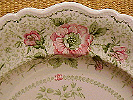 BI-COLOR >> |
 POLYCHROME >> |
Romantic Transferware: 1830's and 40's
By 1830's, Staffordshire potters had achieved a high level of mastery in the use of paper "transfer" prints to convey decorative images from engraved copper plates to yet-unglazed ceramic tableware. Changes in transferware production about this time, however, mark a distinct break from the products of the previous decades. Most dramatically, the introduction of new pigments that could reliably stand up to firing temperatures enabled potters to produce a profusion of wares in light blue, red, brown, black, purple, green, and - though quite rare - yellow.
In addition, potters tended to rely less on previously published prints as design sources, and finally in 1842, new copyright laws prohibited such copying. As a result imaginary scenes based on landscape formulas replaced earlier depictions of specific locations, hence the term "Romantic" transferware.
Other traits distinguish the production of this period.
- A whiter clay body and clearer glaze lead to a greater contrast between the printed color and the bright background.
- Shapes vary widely from the scallops and curves echoing the Rococo revival in furniture to the faceted angular shapes of the Gothic revival.
- Elaborate borders feature floral garlands, scrollwork, and often small secondary scenes.













